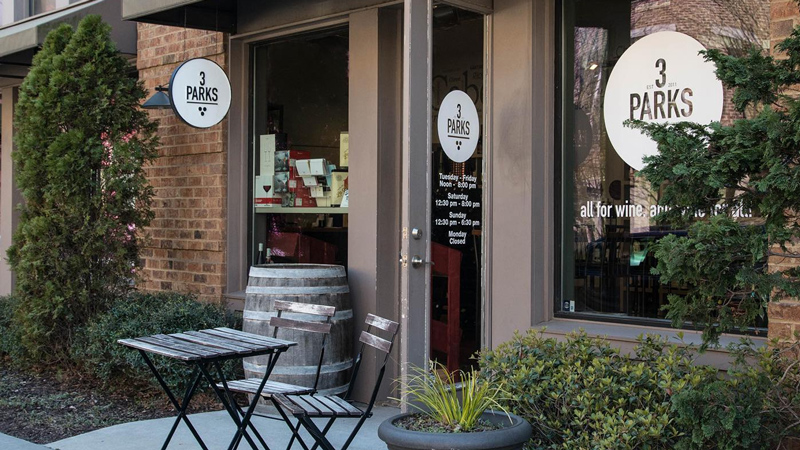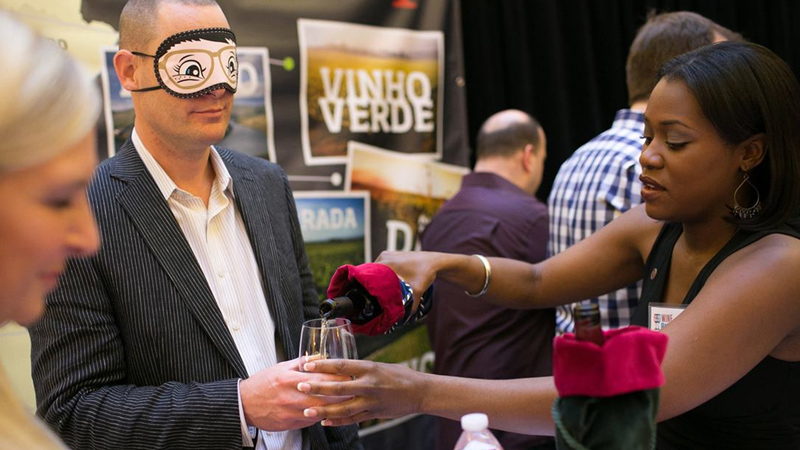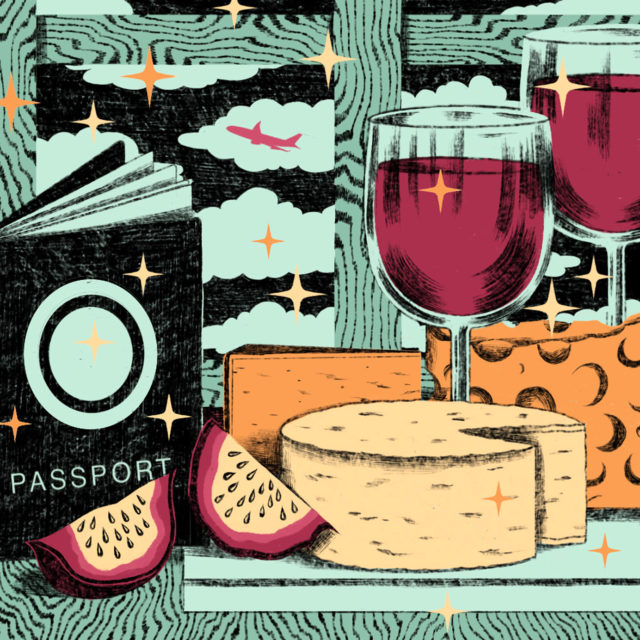One can easily be summoned back to a moment or a special trip through a glass of wine. A sip of Champagne teleports me back to my only trip to Champagne, France. The acidity helps recall the memories of the caves and tunnels we walked through at G.H. Mumm. I vividly remember touching the walls, feeling the moisture on them, realizing how deep underground we were, and immediately recalling the impact the soil has on the grapevines. This physical memory creates a moment of joy that happens any time I open a Champagne bottle, specifically the G.H. Mumm Grand Cordon.
Fine wine can be aspirational, enigmatic, and, at times, elitist. It can be the perfect complement to a harmonious food pairing. Wine can bring communities together. But is wine essential during a pandemic?
The United States government answered this question with a resounding “yes,” as many jurisdictions announced wine and liquor stores would remain open as essential businesses in much of the country. By contrast, many on-premise businesses, including restaurants, have been forced to close their doors with the exception of outdoor dining, delivery, or takeout, creating an indelible and at times insurmountable ripple effect on this integral channel of the wine business.
For those itching for the world to open back up, a bottle of wine can be the ticket to its origin for a fraction of the cost of actual travel. To further explore wine regions while in lockdown, I spoke with four seasoned wine professionals about how they are utilizing wine in their personal and professional lives to travel the world.

Sarah Pierre, owner of 3 Parks Wine Shop in Atlanta, says that customers’ buying habits have changed dramatically since 3 Parks converted to an online and curbside pickup/delivery model.
“If you visited 3 Parks in the past, you likely had us pick out a handful of selections to choose from, and the customer usually made the final decision. In this new way of ordering, we are making all the selections,” Pierre says. This allows her and her staff to aid in customer discovery. She also sees an emotional aspect. “People love the element of surprise, as well as the ease of not having to make any decisions,” she says. “It’s a fun new wine surprise each time!”
Wanda Cole-Nicholson, CMS advanced sommelier and owner of VinBev in St Louis, creates value for her guests by showcasing lesser-known regions that still boast great quality. “I love showing guests wines that are somewhat close to widely known areas,” she says. “Some examples include Roussillon of southern France and Lalande de Pomerol of Bordeaux. These areas often share similar terroir with widely popularized surrounding regions. Just being outside of the popular designations, the grapes are a fraction of the price, but very good quality.”
The arduous journey of the vines in certain regions is among the most compelling for Cole-Nicholson: “I love visiting places where viticulture is an anomaly,” she says. “Conditions such as desert, frigid cold, steep gradients, and other aspects that challenge the winemaker’s ability to persevere and create legendary wines.” Wines of Israel, for example, show the depth and complexity of this extreme viticulture.

Similarly, Tonya Pitts, wine director for One Market in San Francisco and owner of Tonya Pitts Wine Consulting, references the magic in the moment of discovery when presenting a new wine bottle for her guests: “That’s the excitement, the not knowing, and the adventure for myself and my guests. I am pulling the rabbit out of the hat,” she says.
Local wine shops can also be a resource for food pairings, particularly as newly out-of-work and home-bound adults are looking for ways to spice up their home cooking regimens. (If there was ever a time to switch out “Taco Tuesday” and diversify one’s cooking repertoire, 2020 was it.)
While many people may be compelled to stick with drinking wines they are familiar with, this is actually the best time to step outside of one’s comfort zone.
Exploring different wine regions to pair with food is an additional way to add flare to the kitchen. “If it grows there, it will pair” is one of many beliefs when it comes to food-and-wine pairings.
Pierre has truly enjoyed helping her customers pair wines with their new and creative dishes. “Two of my most memorable, frequently requested pairings were stewed oxtails which I consistently paired with either a Gigondas or a Langhe Nebbiolo. Over the summer we paired a lot of seafood boils with a riper style Albariño. It’s like squeezing the lemon on the shrimp and the rich, ripe, slightly sweet fruit notes help curb the heat of the seasoning,” she says.
New York City-based sommelier, author, and sommelier instructor for The Sommelier Society of America Charles Springfield explains it this way: “There are so many beautiful and dynamic wine regions spread across the world with their own unique characteristics. You can smell it in the wind. You can smell it from the rocks. You can smell it when the sun shines bright on the region in the daytime. And you can smell it after a heavy rain in the evening. I can get the full flavor and essence of a place from simply smelling and tasting the wine,” Springfield says.
To which I emphatically say, “Yes, please!”
During times like these, when travel is restricted and dining out is limited at best, drinking wine is one of the only ways we can cross geographical borders. With a little imagination, wine lovers can be whisked away to places they’ve never been, or may never get to go. In this way, wine can become a personal passport to the world’s many wine regions — each sip representing a piece of its culture, history, and collective memories of a time and place.
Five Wines to ‘Travel’ With While Waiting Out Covid-19
The combination of magic and value in a bottle of wine is sure to leave adventurous wine lovers with a plethora of experiences that can hopefully offset the disappointment of the canceled trips of 2020. Each wine professional has provided their quintessential wine choice that has helped them find and create that magic for themselves.
Larissa’s Pick: 2016 YATIR CREEK, JUDEAN HILLS, ISRAEL
From a forest planted in a desert in Israel blooms Yatir Winery’s vineyards. The 2016 vintage of Yatir Creek is a blend of Syrah, Tannat, and Malbec. With the finesse and structure to be enjoyed now, or in five to 10 years, this full-bodied wine expresses flavors and aromas of ripe blackberry, black cherry, plum, black pepper, cassis, and violets. ($44)
Charles’s Pick: 2017 CATENA ALTA MALBEC, MENDOZA, ARGENTINA
“The high-elevation vineyards with their natural mountain irrigation, the Zonda winds, and various macro and microclimates take an indigenous French grape and give it an entirely different nose, feel, taste, and existence. This wine provides an elegance that most people wouldn’t necessarily associate with Argentine wines. The climate from the high-elevation areas breeds a natural freshness in the wine along with a Burgundian-like softness. The wine is exceptionally balanced with varied flavor nuances from blueberry to forest floor,” Springfield says. ($60)
Sarah’s Pick: MIRCO MARIOTTI ‘SÈT E MÈZ’ FORTANA DELL’EMILIA ROSATO, EMILIA-ROMAGNA, ITALY
“On the Romagna side of the region, there is a coastal area called Ferrara. I am fascinated with this region and the wines that come out of it. Grapevines grown on the beach! Yes, please! Every time I drink this wine it transports me back to Emilia-Romagna. Each sip is like eating a salted strawberry. 100 percent Fortana, the wine is an unfiltered, unfined, frizzante sip of a fruity sea,” Pierre says. ($23)
Tonya’s Pick: 2018 COVELA EDIÇÃO NACIONAL AVESSO, VINHO VERDE, PORTUGAL
“This area is in the southwest region of Vinho Verde, near the beginning of the Douro region in Portugal. Every time I drink this wine, I am reminded of my trip there several years ago and that moment. Avesso is an indigenous aromatic grape with nuances of kaffir lime, white nectarine, golden delicious apples, white flowers, and dried herbs. On the palate, the wine is fresh, bright, lively with notes of citrus, wet rock, and repeats the nose,” Pitts says. ($20)
Wanda’s Pick: 2017 DOMAINE LAFAGE CÔTES DU ROUSSILLON ‘LA GRAND CUVEE’ BLANC, FRANCE
“Although the region was made famous historically for fortified wines and most recently red blends, the white wines are absolutely gorgeous. They are well structured with the perfect balance of body and acidity. The long, warm growing season imparts ripe fruit character and full body. The 80-year-old vines and schist-dominated soils add a unique mineral component, rendering the wine multi-layered and complex. It totally over-delivers for the price,” Cole-Nicholson says. ($19)
